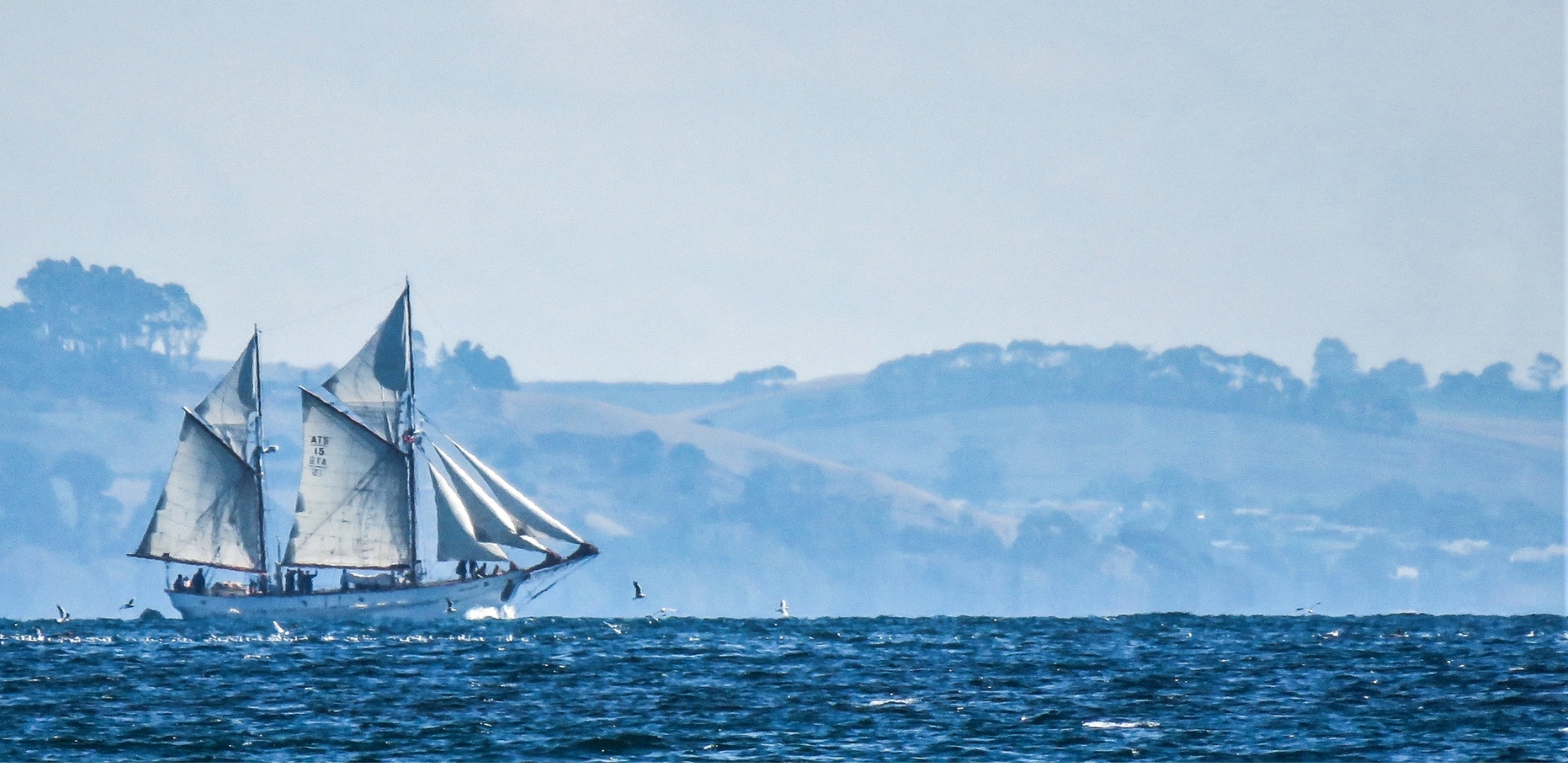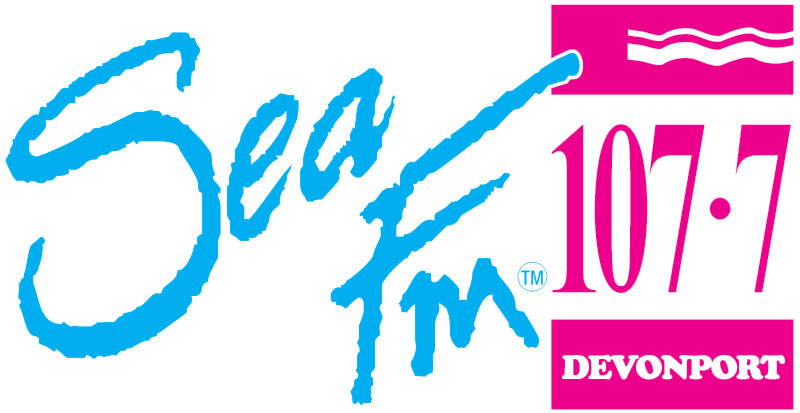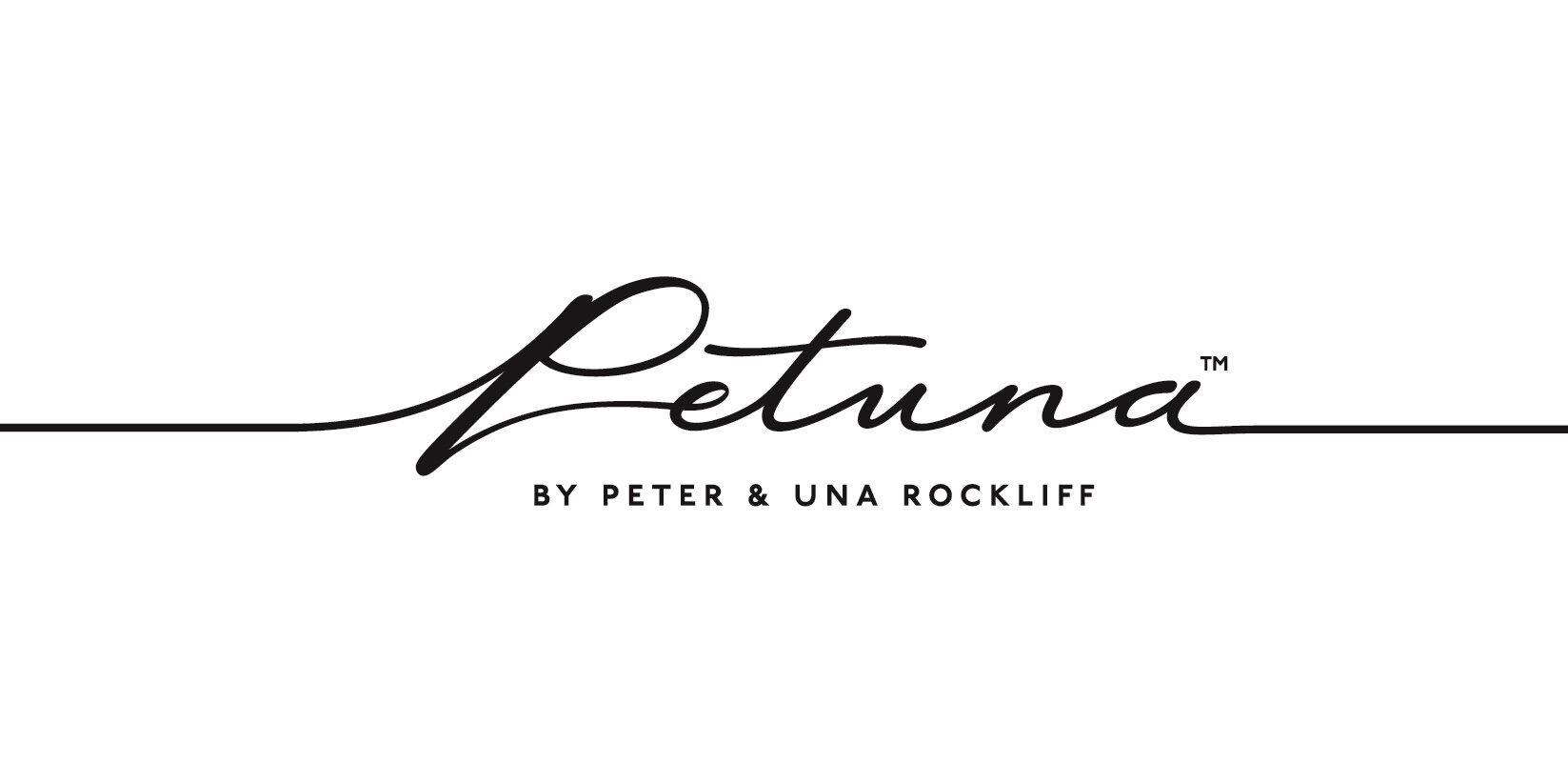Immerse yourself in the engaging story of the Burgess family’s fishing ketches, their seafaring adventures, and their lasting influence on the Bass Strait’s crayfishing trade.
 One of several fishing ketches “ketch” being the style of the rig built and owned by the Burgess family. Built-in Launceston in 1936 overall length 19.7 metres (61’ 4”) – seven sails total. Built with a “wet well” to store crayfish while working along the coast and keeping them fresh whilst transporting them to market. During WWII chartered by the Commonwealth and used to service the Bass Strait undersea telephone cable.
One of several fishing ketches “ketch” being the style of the rig built and owned by the Burgess family. Built-in Launceston in 1936 overall length 19.7 metres (61’ 4”) – seven sails total. Built with a “wet well” to store crayfish while working along the coast and keeping them fresh whilst transporting them to market. During WWII chartered by the Commonwealth and used to service the Bass Strait undersea telephone cable.
The Victorian boats fished the Straits for an average of ten months of the year. They rarely worked in May when the female crays were shelling, i.e., losing the old and growing a new shell; or October, when the bulls were shelling. In 1920 the only regulation put on fishermen was that all crays must be a minimum length of eleven inches from the front spike to the tip of the tail. There was no vessel survey, licence, or other regulation required to fish the Bass Strait Islands.
Tasmania, for many years, had prohibited the use of crab pots south of latitude 40° 38 minutes south. Needless to say, there was a certain amount of poaching done by fishermen working pots south of this line. On one occasion a Victorian boat was fishing illegally and was boarded by an inspector who had swum out from the shore while the crew were away in the dinghy hauling pots. The inspector challenged skipper on his return which resulted in fists being raised by the skipper with support from the crew resulting in the inspector being bundled into the bottom of the dinghy and rowed ashore. At the subsequent court case, the unruly skipper’s vessel was confiscated; he paid a £400 ($800) fine to have his boat returned to him.
Jack Norling can recall catching one hundred and twelve dozen crays in one day and says that the “Surprise” once caught one hundred and thirty dozen in one lift; and the “Mary Norling”, eighty-four dozen. In 1947 the “Julie Burgess” caught nine tons of cray in three weeks, which she landed at Lady Barron, Flinders Island. Of course, these were extreme catches.
Prices fluctuated – in the 1920s crays were sold for 6/ – to 7/ – (60c to 70c) a dozen; in the 1930s, Jack Norling can remember receiving £70 ($140) for three hundred and twelve dozen crays. The late 1940s brought improved prices – the “Julie Burgess” received the then record price of £5.12.0 ($11.20) a dozen.
Captain R.J. (Dick) Burgess Jnr., relates a typical crayfishing trip of the pre-1950 era:
Stores would be loaded at Stony Point and the wind being fair, the main, mizzen, and jib sails would be set and the vessel would slip down the bay with the ebb tide. After clearing Seal Rocks at the entrance to Westernport Bay, the topsails and outer jib would be set and a course set for the Furneaux group of Islands. The vessel would proceed down the Victorian Coast past Scull Rock and Wilsons Promontory, passing to the west of Curtis Islands, and a landfall would be made in the vicinity of Prime Seal Island. Sometimes the vessel would anchor in the lee of Prime Seal to catch bait, such as shark, skate and barracouta. On other occasions, they would proceed directly to Long Island to visit the Barretts and catch their bait there. When at Long Island they sometimes took the opportunity to clean the vessel’s bottom by beaching her on the bank inside the island, where she would be scrubbed and painted when the tide went out. On arrival at the fishing ground, which might be Clark Island or Georges Rocks, further south, the motorboat would be put over the side and loaded with pots. The pots were then baited, set and left to be hauled the next morning. In the morning the pots would be hauled, baited and re-set, and the crays taken to the anchored ketch where they were lifted aboard in baskets and tipped into the well.
A wind change was common, putting the ketch on a lee shore which necessitated heaving up the anchor and shifting around to the lee side of the island. This was usually done under sail as the engines were very small and ineffective in a head sea. Great care was taken at these times as the slightest error in judgement would have the vessel on the rocks. Firstly, the anchor chain would be hove short and the main and mizzen sails set and ‘canted’ with guys to the ‘tack’ the head sails would be loosened, but not set, and the sheets sheeted to the opposite side of the main and mizzen sails in order to ‘box’ the vessel’s head off when the anchor was broken out. When the anchor was broken out the jibs would be raised and the vessel would fill away with the main and mizzen – slowly forging ahead – the remaining anchor chain was hauled and the anchor catted. The vessel would then sail from the anchorage and work around to the lee side of the island. If it was night and the pots were down, the vessel would have to ‘dodge’ around until daylight when the pots could be hauled from the motorboat. When the well was filled with crays, sail would be set for Stony Point or Port Welshpool. Stony Point was preferred as it was closer to Melbourne, but Welshpool was often used in the winter, saving a ninety-mile beat up the Victorian Coast against the prevailing winter winds. On one occasion a load of crays was caught in three days, but it took another three weeks to reach Stony Point, jumping from anchorage to anchorage as the weather eased a little.
In the days of sail, at certain times, there were a number of fishing and small trading craft sheltering from bad weather in various anchorages of Flinders Island; the Kent group; Wilsons Promontory and King and Hunter Islands. These broken trips afforded the fishermen the rare opportunity of visiting each other – to discuss matters of mutual interest. At other times, when the wind fell away to a flat calm, the time was spent catching bait, washing down paintwork, or sailorising work such as renewing running rigging, making up new foot ropes and changing sails. The Burgess boats always carried two suits of sails, the older ones were used in the summer, and the new ones in the winter.
When Stony Point was reached, the vessel was brought to anchor as close to the wharf as possible, and the coffs were brought alongside. If the ketch was to go straight back to sea, all the crays would be transferred to the coffs, and then taken over to the coff moorings to await shipment to the Melbourne Fish Market by the local agent. If the vessel was to remain in port a few days, only a portion of the crays would be transferred to coffs, so as to allow the remaining crays more room in the well. Whilst crays could live in the well at sea, they would die in a sheltered port as the water movement and oxygen supply was insufficient to keep them alive.
The last of the fleet of sailers to use Stony Point was the “Julie Burgess” in 1952. This fine ketch still fishes out of Devonport, Tasmania, under the able command of Captain Dick Burgess (grandson of the Cray King) who is very proud of his vessel. She was built by Ned Jack of Launceston in 1936 for the late Harry Burgess, and like most of the crayfishing vessels that the Burgess family built, she is on the lines of the smaller Tasmanian trading ketches, except for having somewhat sharper floors. She’s built on the double sawn frame method, frame size of 10”x5” at close intervals over this goes the two inch bluegum planking, Except for a larger motor the Julie Burgess has changed little since her original 1936 design. No wheelhouse has been fitted, but the topmasts were set down when she lost her bowsprit under the pier at Stanley in 1970. The captain advises that this is only temporary, awaiting Oregon to arrive from Canada for a new bowsprit to be made and the ketch rerigged. She is undoubtedly the last commercial vessel in Australia to set a topsail – on a trip to Hobart in 1967 if things go according to plan she will again set top sails.
During the 1920s and 1930s, the total number of boats fishing the bass Strait islands would have been about 30. Since World War Two and especially since the American Cray tail market opened in the 1950s, there has been a dramatic increase in the number of votes involved in the fishery.
Only a few of the modern vessels carry sail, and then it is only used occasionally in a fair wind or when there is an engine breakdown. Except for the odd yacht, the sight of a sail in Bass Strait is becoming rare.
Sad to say, it is doubtful that we will ever again see large numbers of wind-driven vessels anchored at Northeast River; the Kent Group or Refuge Cove – waiting for a ‘slant’ to sail northward.
Extracts from ‘Australian and New Zealand Sail Traders’ compiled by Garry J Kerr.






